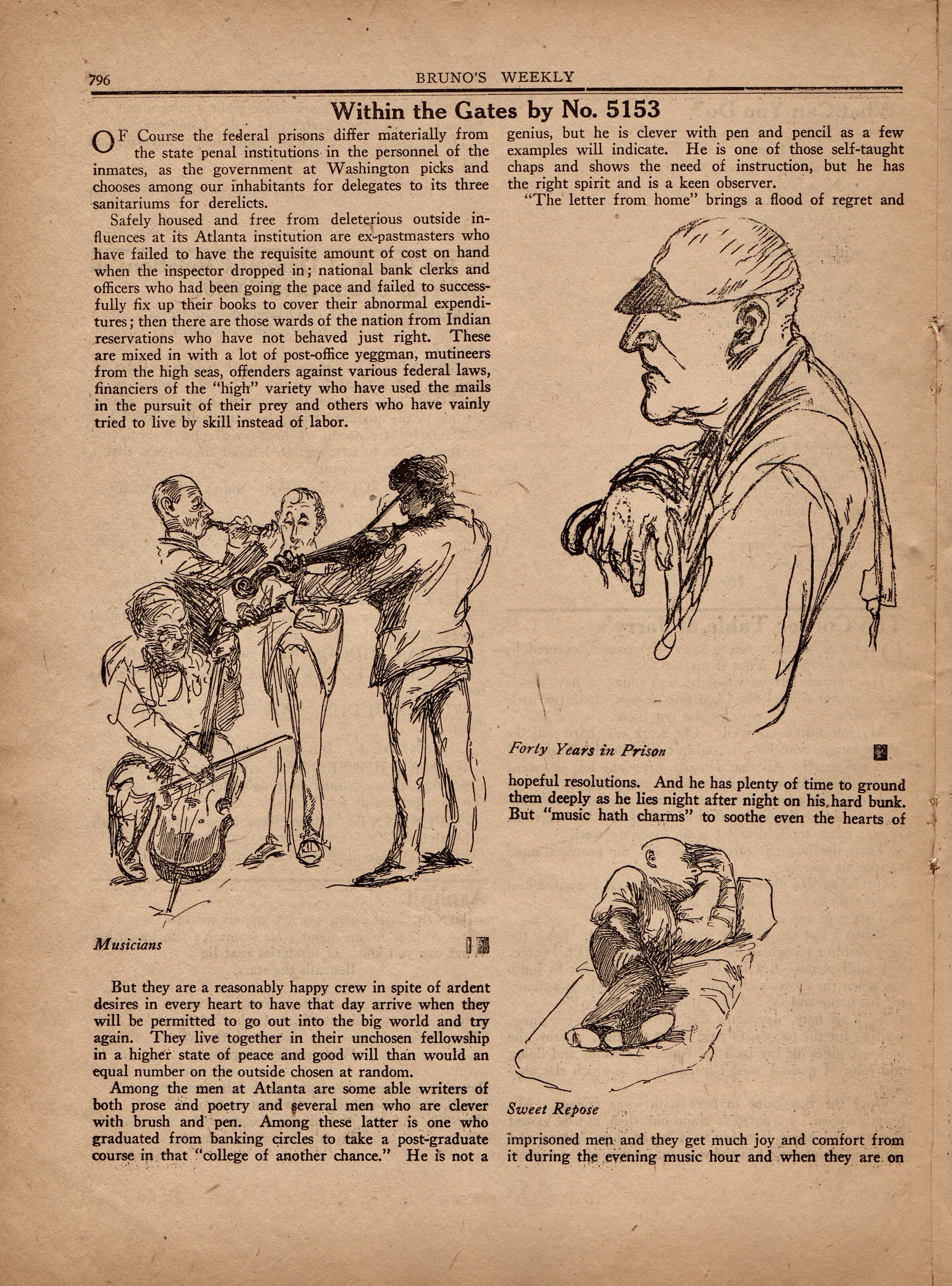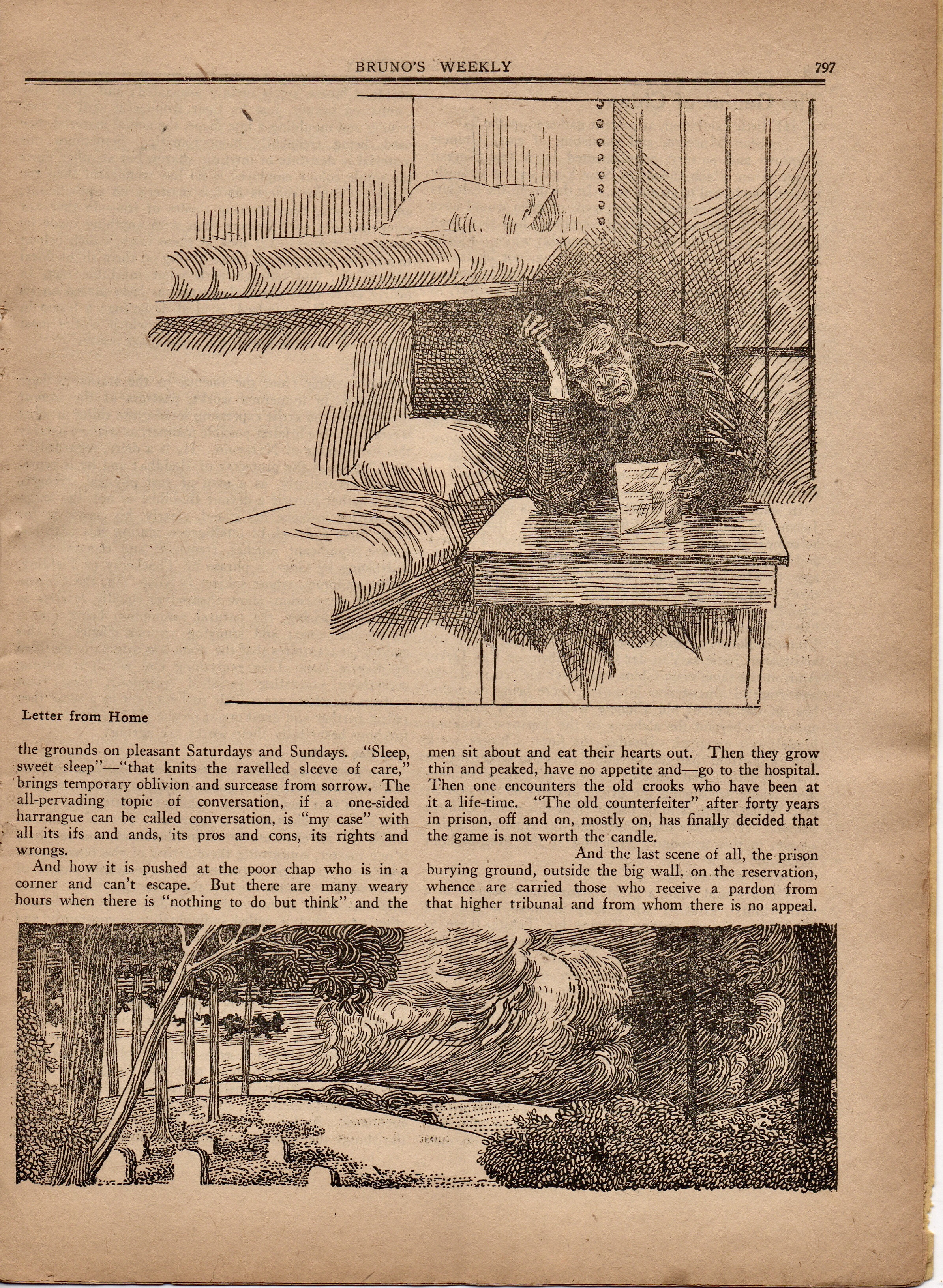Bruno annoys, Clara dances, Vincent is aghast
A Study in Bohemia
I am a big fan of reading Starrett’s works in their original appearances whenever possible. While having his essays, short stories or poems collected into one volume is convenient, there is much to be gained by seeing what else was being written at the time and how Starrett’s work compares with that of his contemporaries.
To illustrate the point, here is a little poem by Vincent Starrett. It is one of his earliest to see publication, coming in the spring of 1916.
If anyone had thoughts of a romantic night, this would have killed it.
The poem has to have been inspired by a real experience. Perhaps Starrett took his first wife, Lillian, from Chicago to Toronto and spent the time there visiting relatives. That would have put the two of them in his late grandfather’s bed. Sounds like it was not the best night’s sleep, nor the most romantic getaway from their Chicago apartment.
And you can stop right there and feel like you’ve gotten everything out of the little verse that Starrett put into it. But why stop when there’s so much more to be said?
Instead, let’s look at the magazine where “An Untimely Thought” first found life and what else was happening at the time to build a context for Starrett’s verse. When you put it into context, it’s not creepy, it’s avant-garde.
Bruno’s Weekly was a short-lived magazine, “published by Guido Bruno in his garret on Washington Square” in New York City.
Begun in the summer of 1915, it created a lot of noise during it’s brief life. Bruno’s Weekly had run its course by Christmas 1916.
Nonetheless, it was an influential publication for the blossoming Bohemian movement in New York, featuring short stories, poetry, art and whatever else struck the fancy of its editor.
According to the Museum of the City of New York, Bruno was “born Curt Josef Kisch in a small town north of Prague in 1884, Bruno was raised in a German-speaking Jewish family. His two younger brothers, Guido and Bruno, inspired the pseudonym that he would use for much of his life.”
Guido Bruno in his New York garret. Source:
https://www.mcny.org/story/guido-bruno-literary-vagabond
He emigrated to the United States in 1906 and made his way to Chicago, where he studied medicine and became a regular in the city’s secondhand book shops. No doubt that’s where he crossed paths with the young Vincent Starrett who was well on the way to building his first major collection.
While practicing medicine in the city, Bruno produced a monthly in Chicago called The Lantern: A Publication of Discarded Truth and Rejected Fiction for several months in 1913. It churned some waters during the time of literary upheaval in the city, which was undergoing a period known as the Chicago Renaissance.
Like many during the Renaissance, Bruno got a taste of fame and left the Chicago for New York, where he set up a Bohemian life in Greenwich Village. Several other little magazines under his leadership were born, lived briefly and flamed out there. In each, he poked at the establishment, published promotional pieces about avant-garde theater that also needled the norms, and promoted anything he darned well liked at the moment.
His garret was severely damaged in a fire in 1916, prompting Bruno to open a bookshop, where he was once again set upon by those who disliked his politics and accused him of selling pornography.
He briefly worked with Frank Harris on Pearson’s magazine, which was pro-socialist and anti-war. One day in the 1930s, he locked up the Washington Square bookshop and disappeared. Rumors made their way back to New York, but the record is vague at best as to his fate. Perhaps the harassment of the city’s morality squads finally got to him. Maybe the gentrification that pushed out the poor artists and attracted better-heeled business people to the Village repulsed him.
The fact was his impact was brief, but impressive.
Bruno loved to push the envelope and was a frequent subject for those worried about the degrading impact his little magazines were having on post-Victorian morality. The morals police frequently denounced the artwork of Clara Tice.
Dubbed "The Queen of Greenwich Village,” Tice studied under Robert Henri and was soon creating artwork that drew praise and outrage. Like the full-page illustration seen here, Tice’s work often depicted nudes gamboling outdoors without shame.
These were not the Classical nudes showing undraped females staring emotionless into space, apparently unaware their tops have slipped off. Those nudes were Classics!
No. Clara’s nudes knew they were barefoot all over. And what’s worse: They liked it!
Clearly, illustrations of such behavior could not be allowed.
Clara and her puppy. Source: "Clara Tice and Her Work" Green Book Magazine (October 1916): 665.
Damned by those who were offended by her work, she was pursued by Anthony Comstock, a founder of the Society for the Suppression of Vice.
Comstock’s campaign backfired. The ensuing notoriety helped bolster Tice’s reputation and her artwork grew in popularity and price. Still, the constant attacks were wearing and as Greenwich Village grew up, so did Tice.
She left the Village and, among other projects, illustrated a children’s alphabet book using dogs for each letter. The book was cleverly titled ABC Dogs.
For me, one of the most touching pieces in this issue of Bruno’s Weekly is “Within the Gates by No. 5153.”
Illustrated by an inmate at a federal prison in Atlanta, it shows that prisons had not progressed much from the days of Dickens.


Confined together were “those wards of the nation from Indian reservations who have not behaved just right,” bank clerks who got caught with irregularities on their books, pirates (the high seas kind), bank robbers and petty con artists. All look abandoned and pitiful.
Among them is a former bank officer who “is clever with pencil and pen.” His sketches show some of the inmates looking bored or forlorn. There is the small music ensemble whose entertainment offers respite on Saturday and Sunday afternoons.
But it is the sheer futility of the endless, monotonous days that comes through in his simple line art.
And then there is the final sketch, a scene from a prison cell window. It shows the serene country vista in the distance, and the prison graveyard in the foreground “from whence are carried those who received a pardon from that higher tribunal from whom there is no appeal.”
It’s a hopeless future to look forward to and even now, more than a century later, the pathos remains.
That’s a look at some elements of this little magazine. It’s an odd combination of content, with sketches, poems and reviews mixed in with what you’ve seen here.
And now that we have considered the context, let’s turn back to Starrett’s verse. If you think about it Starrett’s poem doesn’t feel out of place at all. It’s the kind of edgy art Bruno wanted in the periodical that bore his name.
And that, dear reader, is the advantage of hunting down original appearances.
Be well.

